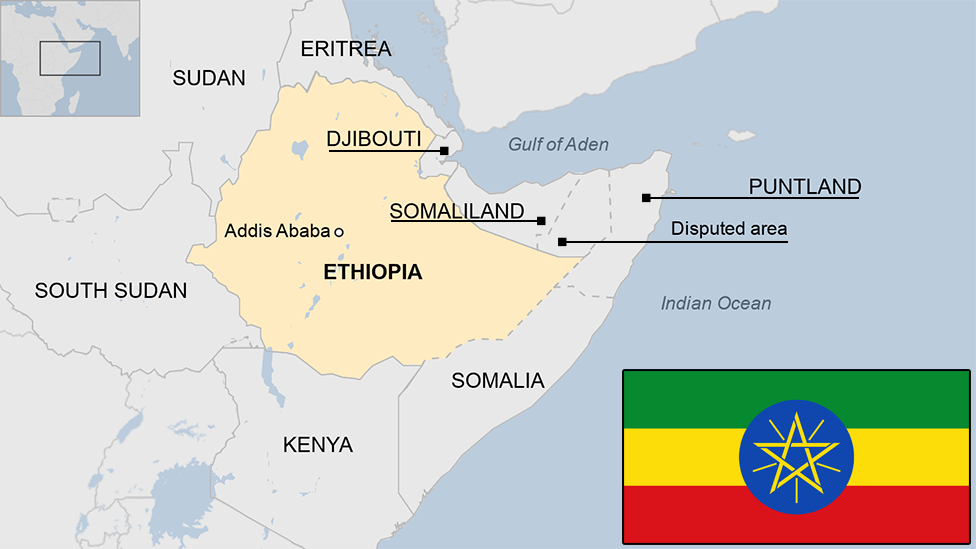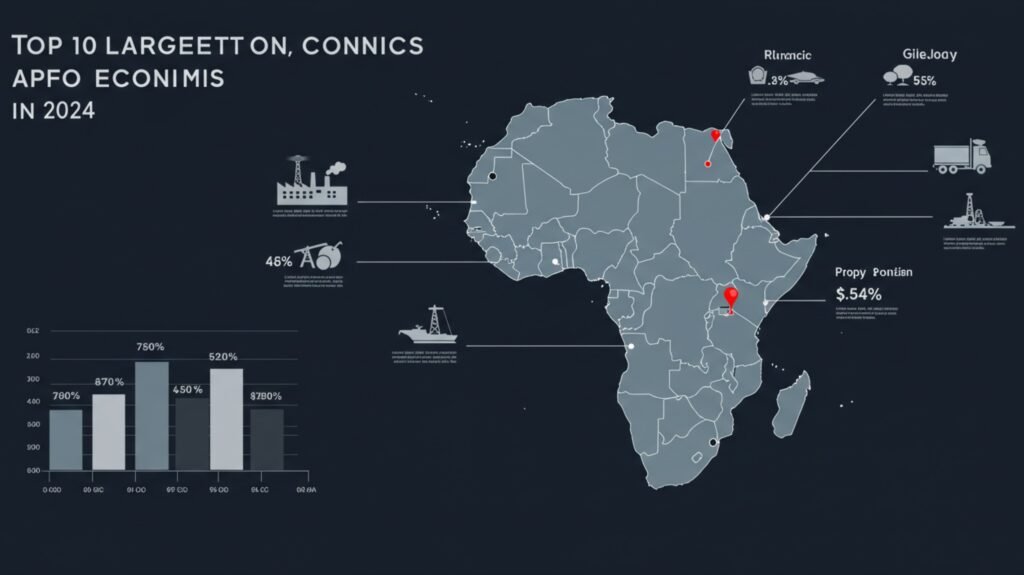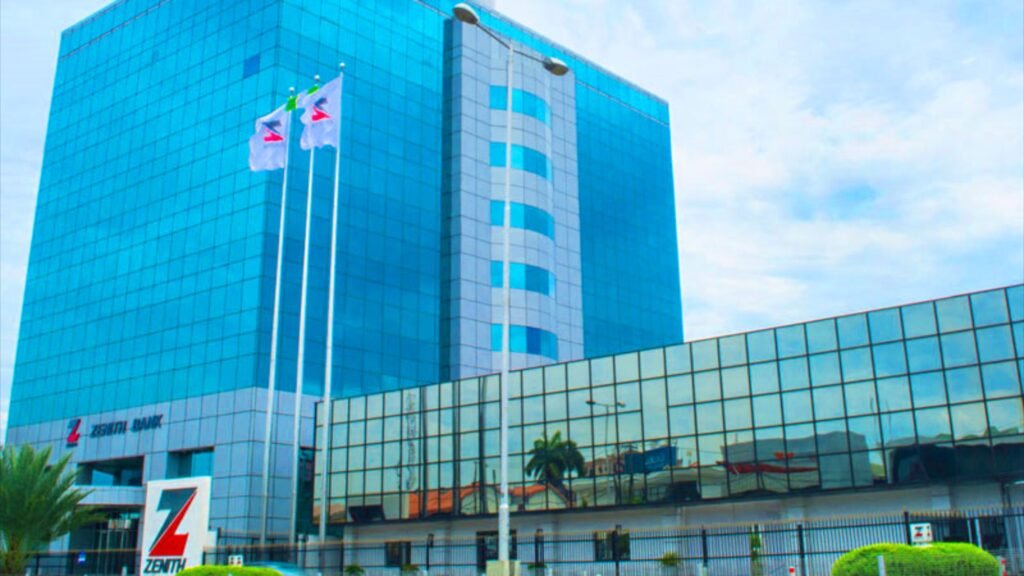- Which country is the richest in Africa in 2024?
- Which African nations dominate the top 10 economic growth spots in 2024?
- What is Nigeria’s GDP in 2024?
- GDP of African countries 2024, by country
- Which country will have the highest GDP in 2025?
Africa has often been overlooked in global economic discussions and is experiencing a surge of economic growth. A wave of young, entrepreneurial talent, abundant natural resources, and strategic investments are propelling several African nations to the forefront of the global economic stage.
Here we are going to look into the top 10 fastest-growing African economies, uncovering the drivers behind their remarkable progress and the transformative impact on the continent’s future.
1. South Africa
South Africa’s South Africa’s GDP is estimated to be around $373 billion. They are the most industrialized economy in Africa
However, it’s important to note that while South Africa is the largest economy in Africa, it has also faced significant economic challenges in recent years, which include:
- Energy Crisis: Severe electricity shortages have impacted businesses and industries.
- Infrastructure Constraints: Inadequate infrastructure, especially in transportation and logistics, has hindered economic growth.
- Global Economic Shocks: The global financial crisis of 2008 and the COVID-19 pandemic have further exacerbated South Africa’s economic challenges.

Despite these challenges they faced, South Africa remains a significant player in the global economy, with a diverse economy, skilled workforce, and strategic location. However, addressing issues like inequality, corruption, and infrastructure bottlenecks will be crucial for unlocking its full economic potential.
2. Egypt
Egypt is a major economic hub in North Africa, with a GDP of approximately $347 billion, this places Egypt as one of the largest economies in Africa and the Middle East.
Key Factors Driving Egypt’s Economic Growth:

Economic Reforms:
- Currency Devaluation: Egypt implemented a significant currency devaluation in 2022, which aimed to attract foreign investment and stabilize the economy.
- Subsidy Reform: The government has been gradually reducing subsidies on fuel and other goods, aiming to improve fiscal sustainability.
- Tax Reforms: The government has introduced tax reforms to broaden the tax base and increase revenue collection.
Mega Projects:
- Suez Canal Expansion: The expansion of the Suez Canal has significantly boosted Egypt’s revenue from international shipping.
- New Administrative Capital: The construction of a new administrative capital is a major infrastructure project that aims to alleviate pressure on Cairo and stimulate economic growth.
Foreign Direct Investment (FDI): Egypt has been actively seeking FDI to modernize its economy and create jobs. Sectors such as manufacturing, tourism, and renewable energy have attracted significant foreign investment.
Natural Gas Discoveries: Major natural gas discoveries in the Mediterranean Sea have boosted Egypt’s energy sector and reduced its reliance on imports.
Tourism Industry:
Egypt’s rich historical and cultural heritage continues to attract tourists from around the world, contributing to the country’s economy.
While Egypt has made significant strides in recent years, challenges such as high unemployment, poverty, and inequality persist. The government’s ability to sustain economic reforms and attract investment will be crucial in maintaining the country’s growth trajectory.
3. Algeria:
Algeria is a resource-rich country with a GDP of about $266 billion.
Key Factors Influencing Algeria’s Economy:
- Hydrocarbon Sector:
- Algeria is a major oil and gas producer, and its economy is heavily reliant on hydrocarbon exports. Fluctuations in global oil prices significantly impact the country’s economic performance.
- The government has been working on diversifying the economy to reduce dependence on oil and gas.
- Economic Reforms:
- Algeria has also implemented various economic reforms to attract foreign investment and stimulate growth.
- These reforms include liberalization of the economy, privatization of state-owned enterprises, and improvement of the business environment.
- Challenges:
- Despite its significant hydrocarbon resources, Algeria faces challenges such as high unemployment, particularly among young people.
- Corruption and bureaucracy remain significant obstacles to economic development.
- The country also needs to improve its infrastructure and education system to enhance its competitiveness.
It’s important to note that Algeria’s economic future depends on its ability to diversify its economy, attract foreign investment, and implement effective reforms

4. Nigeria:
The most populous country in Africa, with a GDP of around $252 billion,
Key Factors Driving Nigeria’s Economic Growth:
- Oil and Gas:
- Nigeria is a major oil producer, and the oil and gas sector remains a significant contributor to the economy.
- However, fluctuations in global oil prices can impact the sector’s performance.
- Diversification:
- The Nigerian government has been actively promoting diversification to reduce reliance on oil and gas.
- Sectors like agriculture, manufacturing, and technology are emerging as key drivers of growth.
- Strong Domestic Consumption:
- A growing middle class has fueled domestic consumption, boosting demand for goods and services.
- Young Population:
- Nigeria has a large and youthful population, which can be a significant source of labor and innovation.
- Challenges:
- Infrastructure: Inadequate infrastructure, especially in transportation and power, remains a significant challenge.
- Corruption: Corruption continues to hinder economic growth and development.
- Security: Security issues, particularly in the northern part of the country, can disrupt economic activities.
- Inflation: High inflation rates can erode purchasing power and discourage investment.

5. Ethiopia:
Ethiopia is a rapidly growing economy in East Africa, with a GDP of approximately $205 billion.
Key Factors Driving Ethiopia’s Economic Growth:
- Rapid Economic Growth: Ethiopia has been one of the fastest-growing economies in Africa for several years.
- Government Investments: The government has invested heavily in infrastructure projects, such as roads, railways, and hydroelectric dams.
- Agriculture: Agriculture is a major sector of the Ethiopian economy, employing a significant portion of the population.
- Manufacturing: The manufacturing sector has been expanding, particularly in textiles, leather, and food processing. industries
- Telecommunications: Their telecommunications sector has experienced rapid growth, improving connectivity and driving digital innovation.
Challenges Facing Ethiopia’s Economy:
- Political Instability: Political instability and conflicts that hinder the economic growth and development of the country
- Poverty and Inequality: Despite rapid economic growth, poverty and inequality remain significant challenges.
- Infrastructure: While the government has made significant investments in infrastructure, there is still a need for further development, particularly in rural areas.
- Debt: above all, Ethiopia has a significant debt burden, which could limit its ability to invest in future growth.
Ethiopia’s long-term economic outlook remains positive despite the challenges they face. The country’s young and growing population, coupled with ongoing economic reforms, has the potential to drive sustained economic growth in the years to come.

6. Morocco:
A stable and innovative economy in North Africa, with a GDP of around $152 billion.
Here are some key Factors Influencing Morocco’s Economy:
- Economic Reforms: Morocco has implemented several economic reforms to attract foreign investment and stimulate growth.
- Automotive Industry: The automotive industry has emerged as a major driver of economic growth, with several global car manufacturers setting up production facilities in Morocco.
- Tourism: Morocco’s rich cultural heritage and beautiful landscapes attract millions of tourists each year, contributing to the tourism industry’s growth.
- Agriculture: Agriculture is a significant sector of the Moroccan economy, although it is vulnerable to climate change and water scarcity.
- Renewable Energy: Morocco, however, has invested heavily in renewable energy, particularly solar and wind power.
Challenges Facing Morocco’s Economy include the following:
- Water Scarcity: Water scarcity is a major challenge, particularly in the agricultural sector.
- Youth Unemployment: High youth unemployment rates remain a significant issue.
- Inequality: Income inequality persists, with a significant portion of the population living in poverty in major cities in the country
Morocco’s economy has shown resilience and continues to grow. Also, the government’s focus on economic reforms and infrastructure development is expected to drive further growth in the coming years.

7. Kenya
Kenya happens to be the economic hub of East Africa, with a GDP of around $104 billion.
Key Factors Driving Kenya’s Economic Growth include:
- Services Sector: The services sector, particularly telecommunications, finance, and tourism, has been a major driver of economic growth.
- Infrastructure Development: Significant investments in infrastructure, including roads, railways, and ports, have improved connectivity and facilitate trade.
- Agriculture: Agriculture remains a vital sector, employing a significant portion of the population.
- Technology and Innovation: Kenya has emerged as a tech hub in Africa, with a thriving startup ecosystem.
- Remittances: Remittances from Kenyans living abroad contribute significantly to the economy.
Challenges Facing Kenya’s Economy:
- Debt: Kenya has a significant public debt burden, which could limit its ability to invest in future growth.
- Inequality: Income inequality remains a significant challenge, with a large portion of the population living in poverty.
- Corruption: Corruption continues to hinder economic development and it is a major virus in Kenya’s economy
- Climate Change: Climate change poses a significant threat to Kenya’s economy, particularly the agriculture sector.
The economy of Kenya has shown resilience and continues to grow in the midst of these challenges. Well, the government in its capacity still focuses on economic reforms, infrastructure development, and technological innovation is expected to drive further growth in the coming years.

8. Angola:
A resource-rich country which has grown it’s GDP to around $92 billion
Key Factors Influencing Angola’s Economy:
- Oil and Gas: Angola’s economy heavily relies on oil and gas exports, however, fluctuations in global oil prices significantly impact the country’s economic performance.
- Economic Reforms: The government of Angola has taken steps to implement economic reforms to diversify the economy and reduce dependence on oil.
- Infrastructure Development: Investments in infrastructure, such as roads, railways, and ports, are aimed at improving the business environment and attracting foreign investment as well.
- Challenges:
- Corruption: Corruption remains a significant challenge, hindering economic growth and development.
- Poverty and Inequality: A large portion of the population lives in poverty, and income inequality is high.
- Debt: Angola has a significant debt burden, which could limit its ability to invest in future growth.
Despite these challenges, the economy has shown resilience and continues to grow. The government’s focus on economic reforms, diversification, and so on and so forth is expected to drive further growth in years to come

9. Côte d’Ivoire:
This is one of the rapidly growing economies in West Africa, with a GDP of around $86 billion.
Key Factors Driving Côte d’Ivoire’s Economic Growth:
- Agriculture: Côte d’Ivoire is a major producer of cocoa, coffee, and cashew nuts, which contribute significantly to the economy.
- Services Sector: The services sector, particularly telecommunications and finance, has been growing rapidly.
- Infrastructure Development: Investments in infrastructure, including roads, ports, and energy, have improved the business environment.
- Political Stability: Relative political stability in some way has contributed to the economic growth the country is enjoying
Challenges Facing Côte d’Ivoire’s Economy are as follows:
- Poverty: A significant portion of the population lives in abject poverty.
- Youth Unemployment: High youth unemployment rates have remained a challenge in the country
- Climate Change: Climate change also poses a threat to the agriculture sector, which is vulnerable to changes in weather patterns.
Despite these challenges, Côte d’Ivoire’s economy has shown resilience and continues to grow. The government’s major focus on economic reforms and infrastructure development to boost the economy is expected to drive further growth in the coming years

10. Tanzania:
Tanzania is a resource-rich country with a GDP of around $79 billion.
Key Factors Driving Tanzania’s Economic Growth:
- Natural Resources: Tanzania is rich in natural resources, including gold, diamonds, and natural gas.
- Agriculture: Agriculture is a major sector, employing a significant portion of the population.
- Tourism: Tanzania’s stunning natural beauty, including the Serengeti National Park and Mount Kilimanjaro, attracts tourists from around the world.
- Infrastructure Development: The government has been investing in infrastructure, such as roads, railways, and ports, to improve connectivity and facilitate trade.
- Economic Reforms: The government has implemented economic reforms to attract foreign investment and stimulate growth.
Challenges Facing Tanzania’s Economy:
- Poverty and Inequality: A significant portion of the population lives in poverty, and income inequality is high.
- Infrastructure: Despite recent investments, infrastructure remains a challenge, particularly in rural areas.
- Corruption: Corruption is a significant problem, and it hinders economic development.
- Climate Change: Climate change poses a threat to Tanzania’s economy, particularly the agriculture sector.
Despite these challenges, Tanzania’s economy has shown resilience and continues to grow. The government’s focus on economic reforms, infrastructure development, and diversification is expected to drive further growth in the coming years.

In conclusion, while challenges such as poverty, inequality, and infrastructure deficits persist, the continent’s economic landscape is undergoing a significant transformation. Countries like South Africa, Nigeria, Egypt, and Ethiopia are leading the way, driving economic growth and attracting foreign investment, and so on
However, to fully realize its potential, Africa must address key issues such as corruption, political instability, and climate change. Also, in addition to these, by investing in education, healthcare, and sustainable development, Africa can drastically unlock its full economic potential and secure a prosperous future for its citizens








